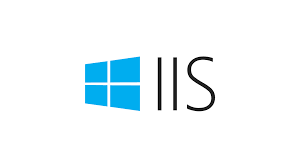Learn how to disable TLS 1.0 on Windows and IIS Server. Our IIS Support team is here to help you with your questions and concerns.
How to Disable TLS 1.0 on IIS Server
TLS is a critical security protocol. It helps encrypt communications between clients and servers. Furthermore, SSL and TLS are cryptographic protocols that offer authentication and data encryption between different endpoints.

As technology advances, older protocols with known security vulnerabilities become obsolete. TLS 1.0 falls into this category.
So, we have to disable TLS 1.0 on Windows and IIS servers as they weaken security.
How to Disable TLS 1.0 on Windows and IIS Server
Disabling TLS 1.0 involves adjusting registry settings. So, we can do this with the IIS Crypto tool:
- First, download and install the IIS Crypto tool.
- Then, launch the tool and then disable TLS 1.0 by unchecking its box.
- After that, apply the changes and restart the server for the changes to take effect.
Alternatively, we can disable TLS 1.0 manually:
- To begin with, open `regedit.exe` and head to the following key:
HKEY_LOCAL_MACHINE\SYSTEM\CurrentControlSet\Control\SecurityProviders\SCHANNEL\Protocols - Then, expand the `Protocols` section and click `Server` or `Client` based on our requirements.
- Now, we can disable or enable a protocol by adjusting the binary or hexadecimal value:
- Binary:
- `0` for off
- `1` for on
- Hexadecimal:
- `0x00000000` for off
- `0xffffffff` for on (4294967295)
- Binary:
- Then, we have to restart the server for the changes to take effect.
- Next, we have to check the settings with a TLS checker and make sure the website remains functional.
Alternatively, we can disable TLS 1.0 via the registry with the following entry:
HKEY_LOCAL_MACHINE\SYSTEM\CurrentControlSet\Control\SecurityProviders\SCHANNEL\Protocols\TLS 1.0\Server
"Enabled"=dword:00000000
"DisabledByDefault"=dword:00000001
At the end of the day, disabling TLS 1.0 helps improve the security of our Windows and IIS Server environments. Let us know in the comments if you need further help.
[Need assistance with a different issue? Our team is available 24/7.]
Conclusion
In brief, our Support Experts demonstrated how to disable TLS 1.0 on Windows and IIS Server.
PREVENT YOUR SERVER FROM CRASHING!
Never again lose customers to poor server speed! Let us help you.
Our server experts will monitor & maintain your server 24/7 so that it remains lightning fast and secure.




0 Comments